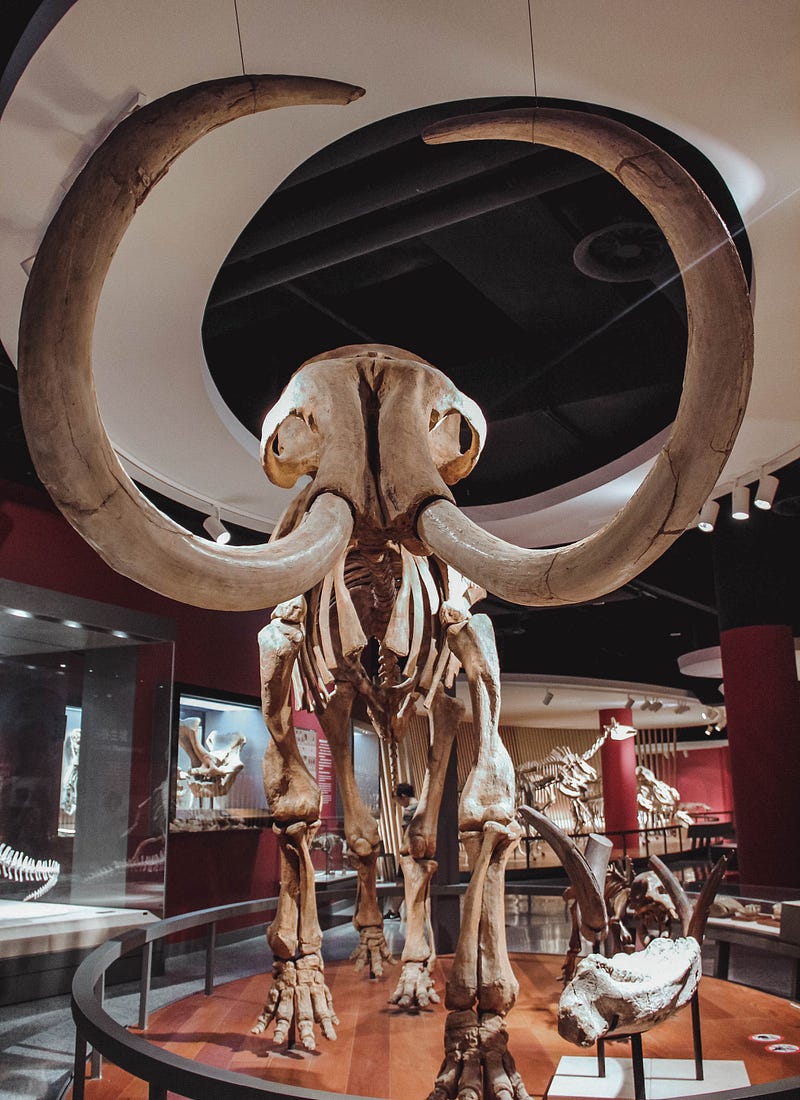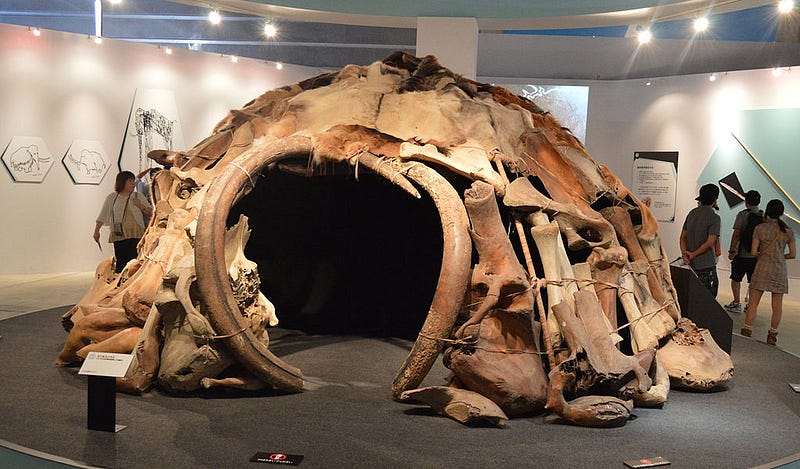Incredible Discoveries: Ice Age Mammoth Bone Structures Unearthed
Written on
Chapter 1: Unearthing the Past
In 1965, a farmer in the Ukrainian village of Mezhyrich, then part of the Soviet Union, began to dig deeper into his cellar. His tools encountered an unusual object two meters underground, prompting him to call local paleontologists. What they uncovered was astonishing and would alter our understanding of Ice Age societies.
The initial discovery was an inverted mammoth skull lodged within another. As the paleontologists excavated further, they found this was merely a fragment of a larger arrangement of mammoth skulls, arranged in a circular formation that appeared to serve as the foundation for a structure.
Scientists propose that this was likely a hut, representing one of the earliest examples of architectural design in human history. Remarkably, ancient hunter-gatherers constructed complex buildings during the Ice Age, thousands of years before the advent of civilization, showcasing their ability to adapt to the vast, frigid tundra.
The construction relied heavily on woolly mammoths, which could stand up to 3.5 meters tall and weigh around 6 tons. The Mezhyrich structure included the remains of 95 mammoths. Their tusks served as roof supports, while other bones, such as mandibles and shoulder blades, formed the outer structure. To complete the hut, it was likely covered with the skins of mammoths or other prehistoric creatures.
Even more astonishing was the discovery of three additional huts at the same site, all constructed from mammoth bones. The weight of these materials posed a significant challenge, indicating that ancient hunter-gatherers exerted considerable effort to transport and assemble them at their settlement.

Chapter 2: Redefining Prehistoric Life
The traditional view of prehistoric humans often depicted them as cave dwellers or nomadic tent users. However, the findings in Ukraine have shifted this perception. The Mezhyrich dwellings, dated to approximately 15,000 years ago, reveal that our ancestors were capable of building sophisticated structures.
Previous excavations in regions as far as Poland and the Czech Republic had revealed similar sites, but none matched the skill displayed in the Mezhyrich huts. Over time, researchers have continued to uncover even more remarkable structures.
In the southwestern Russian region around the Don River, known for its large bone discoveries, excavations in 2014 led to the unearthing of an unprecedented structure. Unlike the 4-5 meter diameter huts at Mezhyrich, this one measured an impressive 12.5 meters across and dated back 25,000 years, making it over 10,000 years older.
The sheer size and design of this structure have led scientists to believe it may have served purposes beyond mere habitation. According to Marjolein Bosch, a zooarchaeologist at the University of Cambridge, it could have held ceremonial significance.
“It was meant to last, perhaps as a landmark, a meeting place, a place of ceremonial importance.” — Marjolein Bosch
However, the true purpose remains speculative. Archaeologist Alexander Pryor from the University of Exeter suggests it may have acted as a large food storage facility. The environmental conditions at the time were harsh, with bone-chilling winds and temperatures often plunging to -20 degrees Celsius, presenting a significant challenge for survival.

Chapter 3: The Ingenuity of Prehistoric Peoples
These discoveries highlight that prehistoric hunter-gatherers were far more sophisticated than previously assumed. Living in a hostile environment, they managed to plan and construct elaborate dwellings, using heavy materials sourced from distant locations.
Were these the initial examples of permanent settlements? While many experts believe these structures were used only temporarily, they demonstrate that the people of that era were capable of remarkable achievements. Notably, the “Venus” figurines and exquisite cave paintings from this time reflect their artistic prowess.

Additionally, artifacts resembling maps of the surrounding landscape have been found at Mezhyrich and other notable sites like Dolni Vestonice, a famous mammoth-hunting camp in the Czech Republic. Evidence suggests that as early as 25,000 years ago, some inventive hunter crafted a map of local terrain using a mammoth tusk.
This ingenuity aligns with studies indicating that prehistoric humans had larger brains on average than modern humans. Paleoanthropologist John Hawks highlights that over the last 20,000 years, the average human brain size has decreased from 1500 cubic centimeters to 1300.
“I’d call that major downsizing in an evolutionary eyeblink.” — John Hawks
The gap of tens of thousands of years between us and these Ice Age inhabitants reveals how closely related we actually are. After all, many of them were your direct ancestors!
